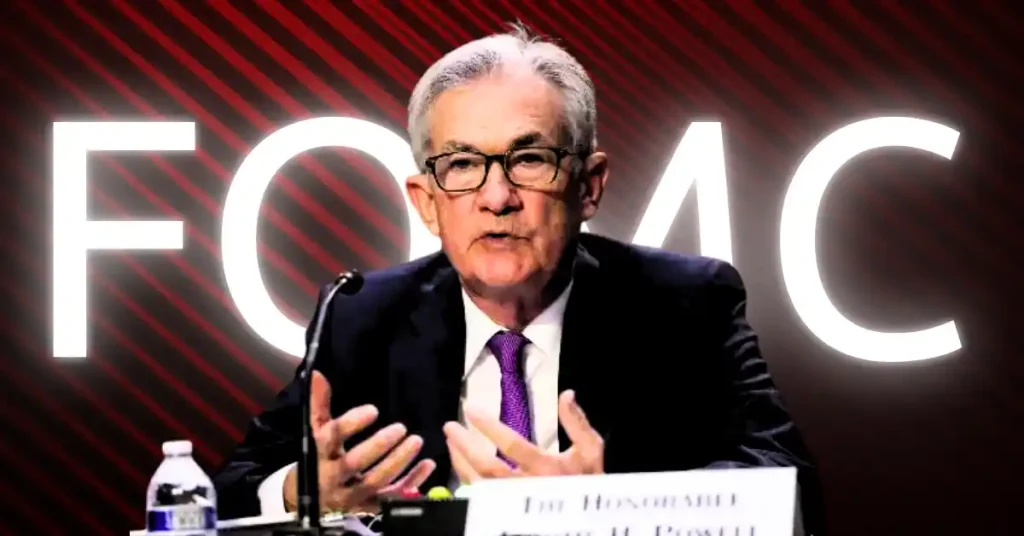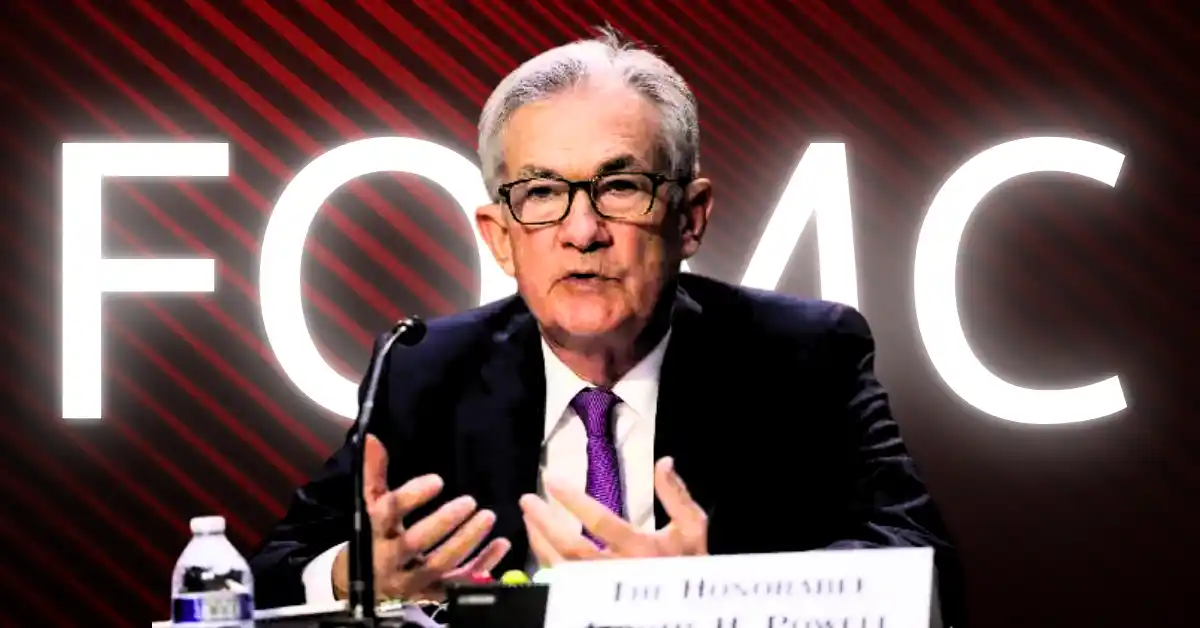
The Federal Reserve and Cryptocurrency: A Delicate Dance
The Federal Reserve’s monetary policy has long been a cornerstone of global economic stability, but its influence extends far beyond traditional markets. In recent years, the crypto market has become increasingly sensitive to the Fed’s decisions, with rate cuts and hikes often triggering significant price movements. This dynamic relationship is complex, shaped by speculation, economic fundamentals, and investor psychology. Understanding how the Fed’s actions might influence the crypto market is crucial for anyone navigating this volatile landscape.
The Fed’s Influence on Crypto: A Two-Way Street
The Federal Reserve’s monetary policy affects the crypto market in several ways, but the relationship is not one-sided. While the Fed’s decisions can shape market sentiment and liquidity, the crypto market’s reaction is also influenced by its unique characteristics, such as decentralization, volatility, and speculative nature.
Liquidity and Risk Appetite
One of the most direct ways the Fed influences the crypto market is through liquidity. When the Fed cuts rates, it makes borrowing cheaper, encouraging businesses and individuals to invest more. This increased liquidity often flows into riskier assets, including cryptocurrencies. Lower interest rates can also weaken the US dollar, making dollar-denominated assets like Bitcoin more attractive to international investors.
However, the crypto market’s reaction to liquidity changes is not always predictable. While some investors may see rate cuts as a signal to invest more in crypto, others might interpret them as a sign of economic weakness, leading to a sell-off. The market’s reaction often depends on the broader economic context and investor sentiment.
Inflation and Store of Value
The Fed’s stance on inflation is another critical factor influencing the crypto market. Bitcoin, in particular, has often been touted as a hedge against inflation. When the Fed signals that it is willing to tolerate higher inflation to support economic growth, investors may turn to Bitcoin as a store of value. Conversely, if the Fed appears to be losing control of inflation, investors might flee from risky assets like crypto, seeking safer havens.
Market Sentiment and Speculation
The crypto market is highly speculative, and investor sentiment plays a significant role in price movements. The Fed’s communication can shape market expectations, influencing whether investors are bullish or bearish. For example, a dovish statement from the Fed Chair can boost market sentiment, encouraging investors to take on more risk. Conversely, a hawkish stance can trigger a sell-off, as investors seek to reduce their exposure to risky assets.
The Potential Pitfalls of Rate Cuts
While rate cuts can create a more favorable environment for crypto, they are not a guaranteed recipe for a bull run. Several factors could dampen or even reverse the expected positive impact.
Economic Weakness and Risk-Off Sentiment
Rate cuts are often implemented to stimulate a slowing economy. If the market perceives the rate cuts as a sign of underlying economic weakness, it could trigger a risk-off sentiment, leading investors to sell off their crypto holdings and seek safer havens. This is particularly true if the rate cuts are accompanied by weak economic data, such as rising unemployment or slowing GDP growth.
Inflation Concerns
While rate cuts can sometimes be seen as inflationary, if the cuts are perceived as a response to already rising inflation, they may be interpreted negatively. Investors might worry that the Fed is losing control of inflation, leading to a flight from risky assets like crypto. This is especially relevant in the current economic climate, where inflation remains a significant concern for many investors.
Regulatory Uncertainty
The crypto market continues to face regulatory uncertainty in many jurisdictions. Negative regulatory developments could overshadow the positive impact of rate cuts, hindering any potential rally. For example, if a major regulatory crackdown occurs around the same time as a rate cut, investors might be more cautious about investing in crypto, despite the lower interest rates.
Decoding the Fed’s Signals
The key to understanding how the crypto market will react to potential rate cuts lies in interpreting the Fed’s signals and the underlying economic conditions. Here are some factors to watch for:
The Fed’s Communication
Pay close attention to the Fed’s statements and press conferences. The language used by Fed officials, particularly the Chair, can provide valuable clues about the Fed’s intentions and its assessment of the economic outlook. “Dovish” signals, indicating a willingness to tolerate higher inflation to support growth, could be particularly bullish for crypto.
Economic Data
Monitor key economic indicators such as inflation, unemployment, and GDP growth. These data points will influence the Fed’s decisions and shape market expectations. Unexpectedly weak economic data could increase the likelihood of rate cuts but also raise concerns about economic weakness.
Market Sentiment
Gauge the overall market sentiment towards risk assets. If investors are generally optimistic and willing to take on risk, the crypto market is more likely to respond positively to rate cuts. Conversely, if investors are risk-averse, the impact of rate cuts on the crypto market may be muted.
Geopolitical Events
Be aware of any significant geopolitical events that could impact global markets. Unexpected events, such as escalating trade tensions or political instability, could overshadow the impact of rate cuts and trigger a flight to safety.
Beyond Rate Cuts: The Broader Crypto Landscape
It’s crucial to remember that Fed rate cuts are just one factor influencing the crypto market. Other important factors include:
Technological Advancements
Developments in blockchain technology, such as the growth of DeFi and NFTs, can drive innovation and attract new users to the crypto space. These technological advancements can create new use cases for crypto, increasing demand and driving price appreciation.
Institutional Adoption
Increased adoption of crypto by institutional investors can provide a significant boost to market liquidity and credibility. Institutional investors bring not only capital but also expertise and legitimacy to the crypto market, which can help to stabilize prices and reduce volatility.
Regulatory Clarity
Clear and consistent regulations can foster a more stable and predictable environment for crypto businesses and investors. Regulatory clarity can help to reduce uncertainty and encourage more investment in the crypto market.
Global Economic Conditions
The overall health of the global economy can impact the demand for crypto as an alternative asset. In times of economic uncertainty, investors may turn to crypto as a hedge against traditional markets. Conversely, in times of economic stability, investors may be more inclined to invest in traditional assets.
Conclusion: Navigating the Uncertain Terrain
Predicting the precise impact of Fed rate cuts on the crypto market is an exercise in uncertainty. While lower rates can create a more favorable environment for risk assets, the actual outcome will depend on a complex interplay of factors, including inflation, economic growth, market sentiment, and regulatory developments.
The Crypto-Fed Conundrum: A Cautious Outlook
The allure of a rate-cut-induced crypto rally is undeniable, but investors should proceed with caution. Understanding the nuances of Fed policy, monitoring key economic indicators, and staying informed about the broader crypto landscape are essential for navigating this uncertain terrain. Ultimately, the crypto market’s response to Fed rate cuts will depend on how the market interprets the Fed’s motives and the underlying economic realities. A balanced perspective, considering both the potential benefits and the potential risks, is crucial for making informed investment decisions in the ever-evolving world of cryptocurrency.





